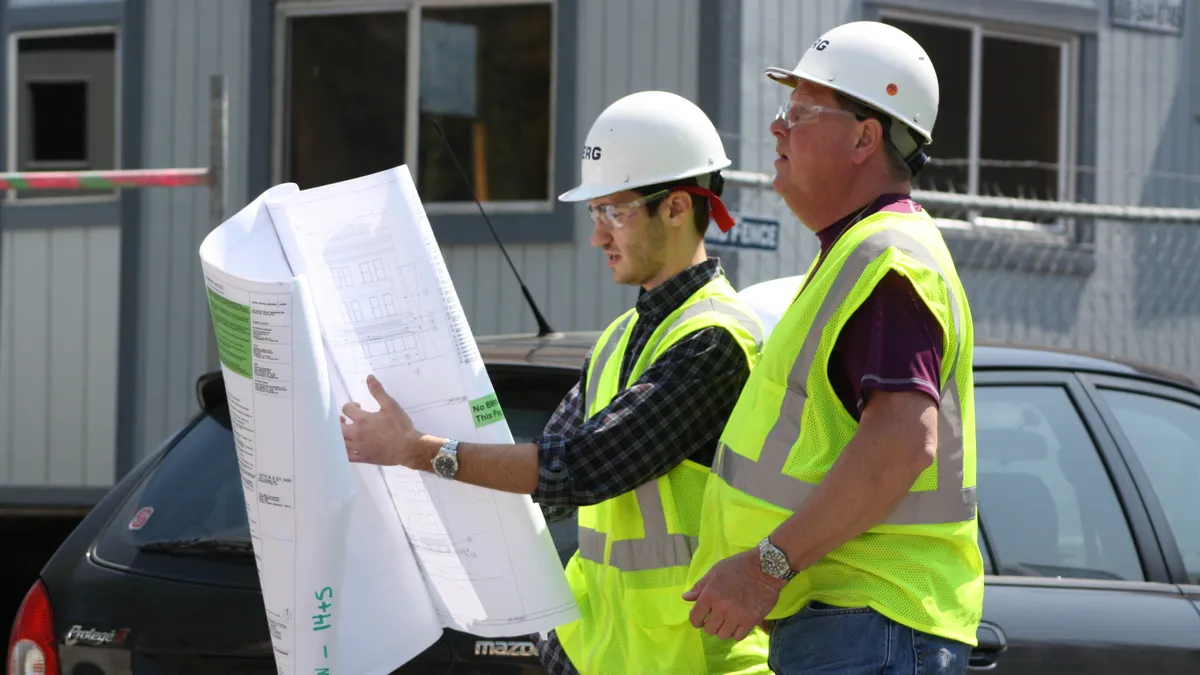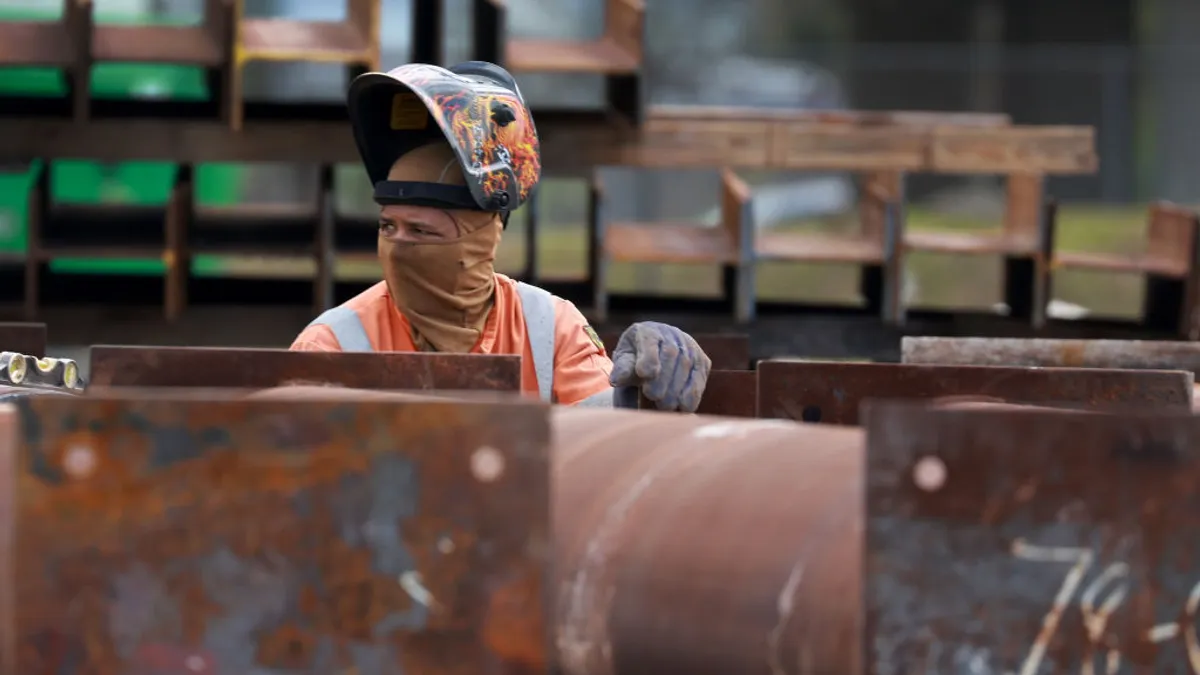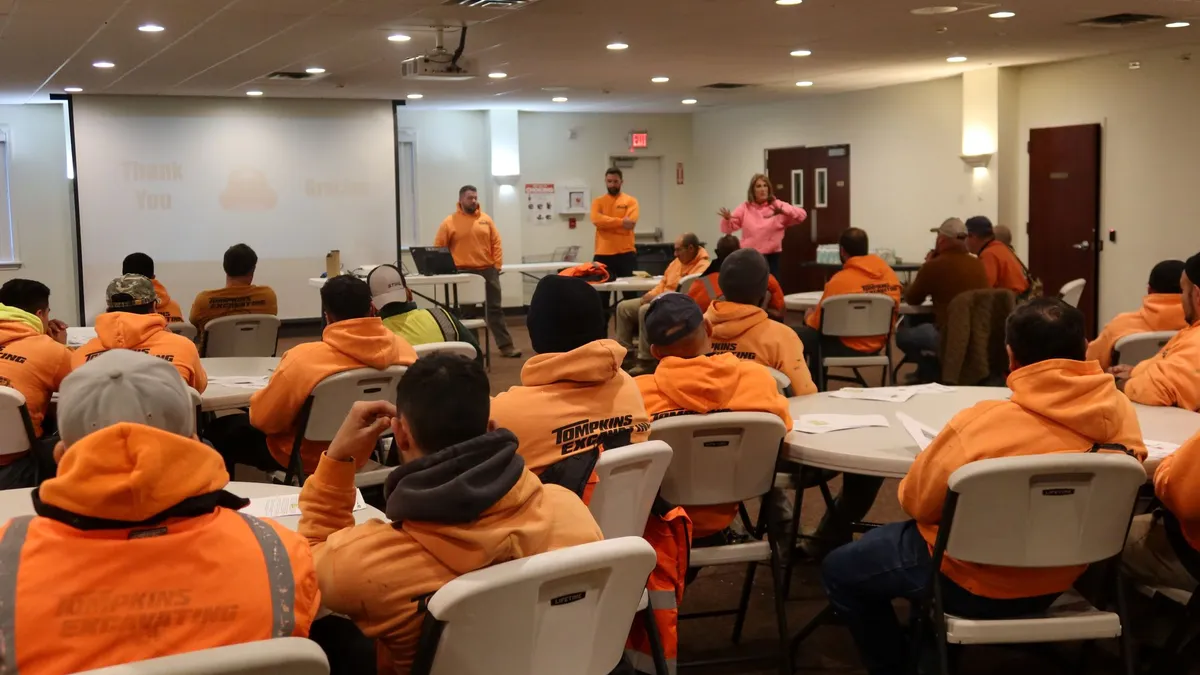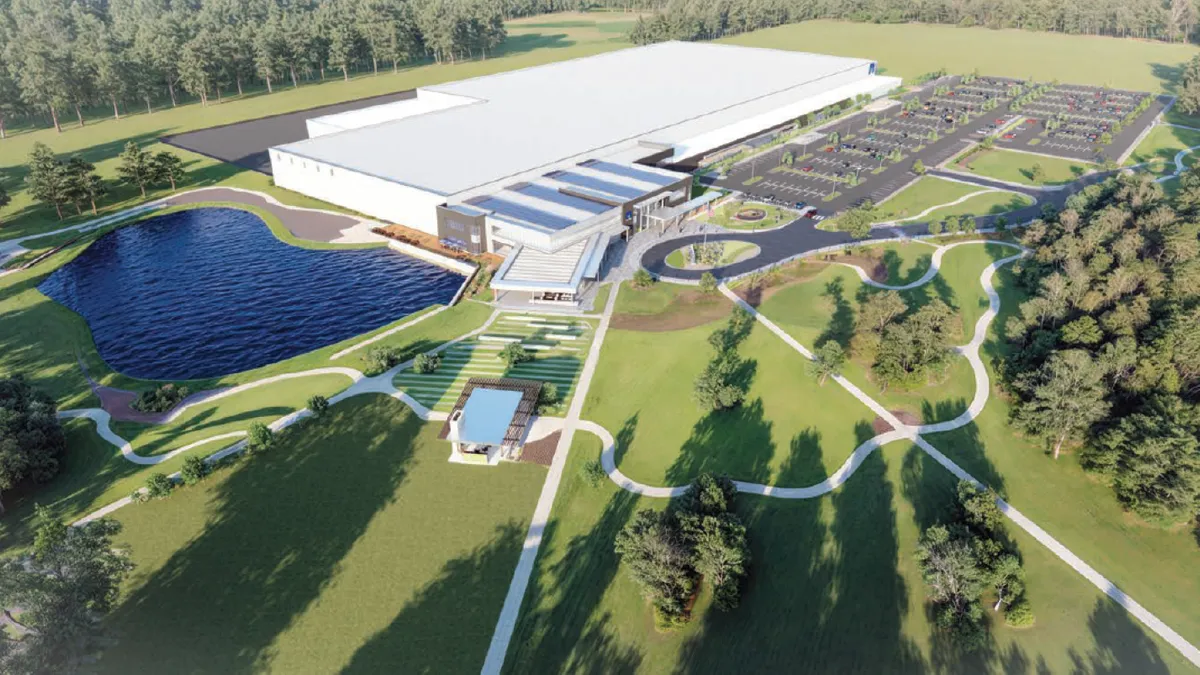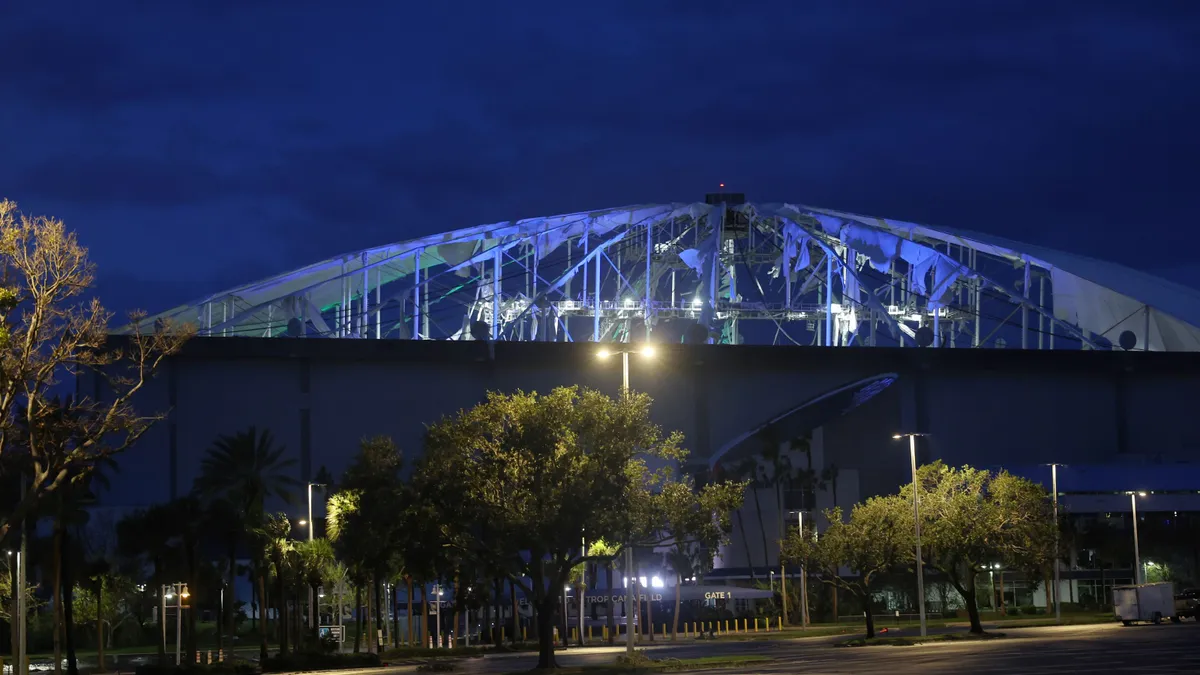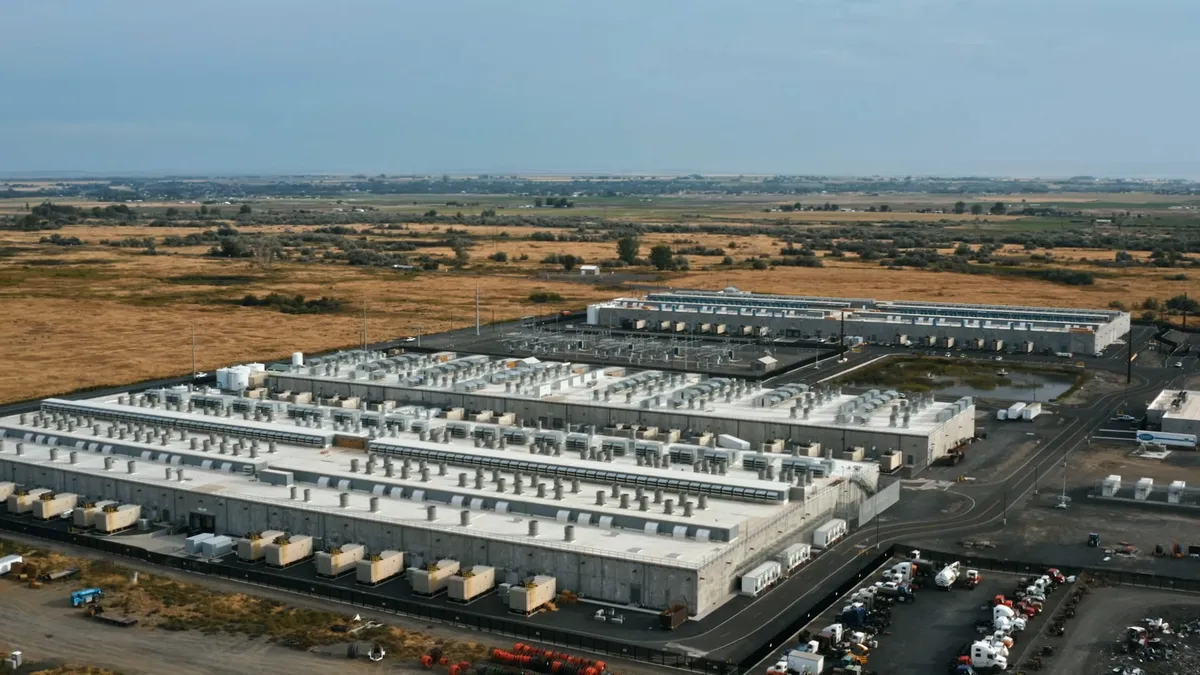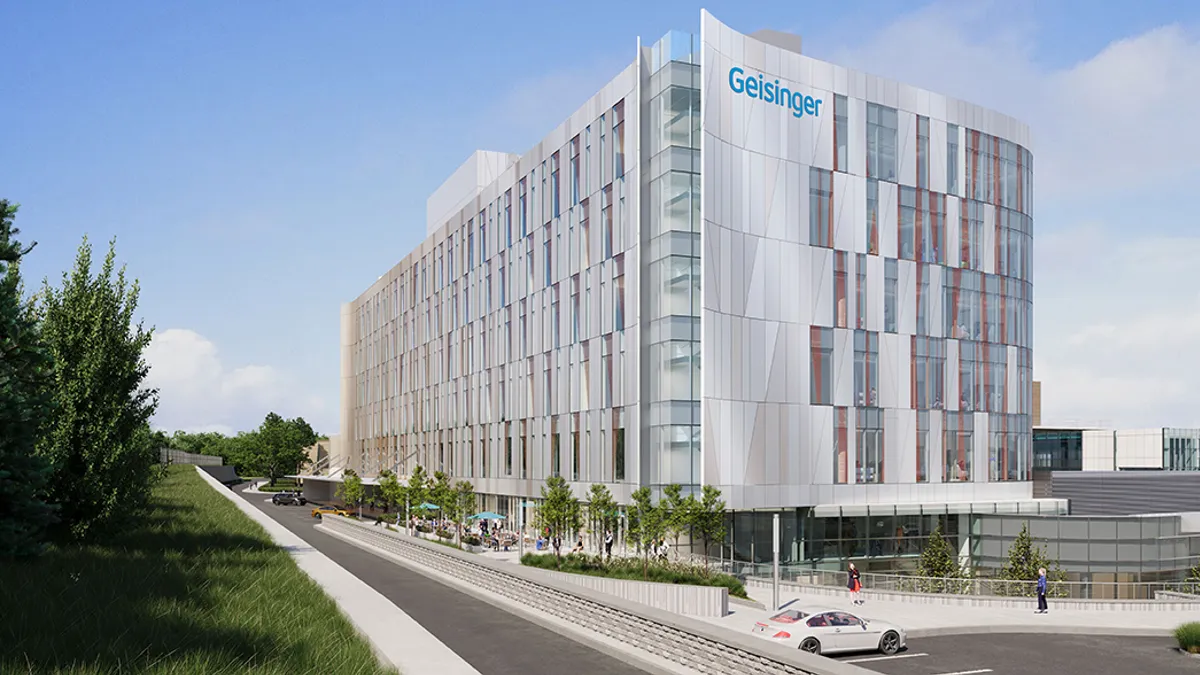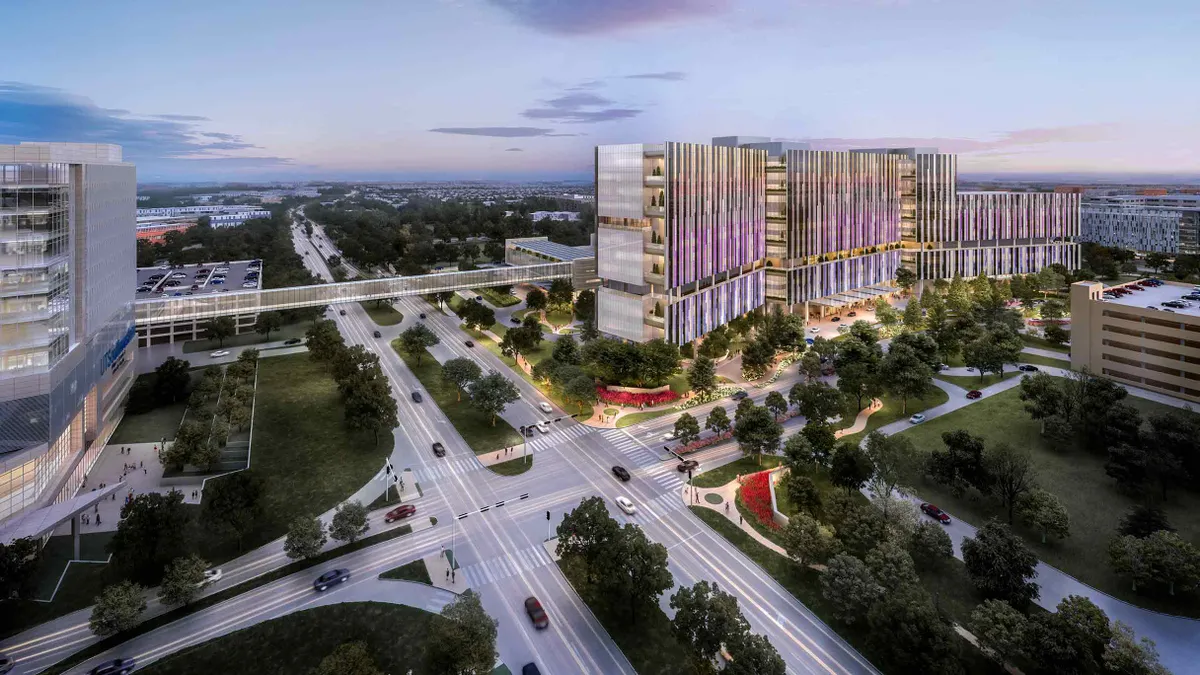The labor shortage continues to dominate the list of concerns for construction companies. During the Great Recession, the industry lost more than 40% of its work force, cutting nearly 2.3 million jobs, according to the Bureau of Labor Statistics.
Even though the economy has rebounded in recent years, a significant portion of those lost workers have not returned to construction. Firms are also struggling to attract millennial workers to careers in the trades that the aging workforce will soon leave behind.
During the Construction Management Association of America's National Conference & Trade Show in San Diego this week, industry experts explored the current state of the sector's workforce problems, as well as ideas for how to tackle the challenge.
The effect of the labor shortage on current industry conditions
While the majority of the conversation around the construction labor shortage has focused on the trades, firms are struggling to snag qualified professionals and white-collar workers as well. A nationwide survey of 1,459 contractors — conducted by the Associated General Contractors of America during July and August — found that 69% are having difficulty finding workers to fill hourly craft positions, 38% are having difficulty hiring salaried field positions and 33% are having difficulty hiring salaried office positions.
"We’re already pressed in terms of the ability to service all the clients with what’s currently on the docket, let alone what’s coming," said Allyson Gipson of Artemis Consulting, in San Diego. She noted that the recession led to a "geographical depletion of talent," as well as a large void of industry expertise.
The aging workforce is also a primary concern for construction professionals, as baby boomers are retiring, but a new generation isn't filling their place.
On the construction services side, the recession brought increased competition as "everybody was scrambling for work," Gipson said. Interest rates have remained consistently low, energy credit tax provisions have been extended and private sector spending has risen. All these factors have spurred a boom in multifamily, highway, retail and office construction, she noted.
However, with that increased construction spending comes more demand for services from an industry already struggling to keep up with current projects. Myrna Dayton, deputy director and deputy city engineer for the City of San Diego, said that despite the agency's efforts to improve recruiting efforts, "We always seem to be short. It's a constant struggle."
Possible tactics to tackle the problem
With these challenges facing all levels of the industry, how can construction professionals draw in more qualified workers and fill the ever-growing void?
Partner with schools and encourage internships to develop the next generation of industry professionals
The gap between graduation and employment can be especially daunting in the construction industry, where students must transition from a classroom environment to the field. Without classes that prepare them for real-life tasks and challenges of a day on the job site, students often struggle to succeed in the industry.
John Prince, an engineer and lecturer with San Diego State University, is working with college students to give them the necessary training for life after graduation. "It's a paradigm shift for students," he said. "They've just been doing tests their whole lives [and then] we hand them a bazooka."
The experts interviewed for this story said that both the industry and academia need to improve the way they work together to maximum students' success. "I see it as two cliffs, the construction industry on one side and the university system on the other. They mostly operate independently," said Dirk Epperson, manager of engineering-construction at the Port of San Diego. "The university gets students through their programs and they graduate. The industry looks for students or recent grads and wants to bring them in. It’s really hard to marry those two."
The panelists emphasized that this focus on developing young talent shouldn't be solely the responsibility of the construction firms, as they said owners can also support internships and entry-level hires when they request bids for projects.
Change hiring requirements to adapt to current conditions
Experts also said standard hiring requirements are often out-of-date for the current industry environment. With owners mandating countless certifications, "those people who have the skills set are going down the road," Gipson said. "The best construction managers running a building program aren’t all necessarily licensed architects."
The Port of San Diego is reexamining its minimum requirements, especially for entry-level positions, according to Epperson. "Maybe our minimum requirements aren't right for the economy," he said. "Maybe we're doing it wrong."
For entry-level positions with the Port, for example, the agency requires two years of engineering experience. If recent graduates don't have extensive internship experience, they are shut out of those entry-level positions.
After recognizing this problem, the Port initiated a trainee program that waives the two-year experience requirement and offers a one-year training period. If the new hires pass the training, they can then become full-time employees.
"We’re trying to look at this norm and change it and think outside the box," he said. "It’s going to be just as effective, and it’s going to bring in some of that talent we need."
Find ways to attract millennials to the industry
The construction industry has consistently struggled to attract younger workers to fill the gap left by retiring professionals. "We have an industry that is less appealing to millennials," Gipson said. "We’re not really a sexy industry."
She encouraged companies to focus on cultivating interest in construction among middle school and high school students. As millennials seek to use their creativity in a work environment that offers autonomy, the industry can tout its ability to offer those kinds of roles.
"We need to find a way to incorporate that kind of ingenuity into what we do every day. As the industry overall is moving forward and the young people are behind us, you’re either going to be behind the curve or changing as it goes," Gipson said.
Kevin Oberheim, a millennial construction manager with RK&K, said the fear within the industry over how to adapt to the new generation has been a familiar story for centuries. "This is not a new trend in the demographics of different generations," he said. "As millennials coming up, we’re really not that different from previous generations."
Dave Ferrara, construction director of the Maryland Transportation Administration, said his agency has emphasized the opportunity for young workers to rise in the organization's ranks. "You have to map out their future for them with a well-defined career path," he said. "If they're hired as a laborer, they want to know there's movement up to a foreman, superintendent, and so on."
Oberheim added that the responsibility to ensure the next generation is successful lies with the current industry veterans. "Millennials aren't here to take baby boomers' jobs. They're here to absorb knowledge," he said. "Give them a chance and a challenge, and be ready to give them the car keys."


